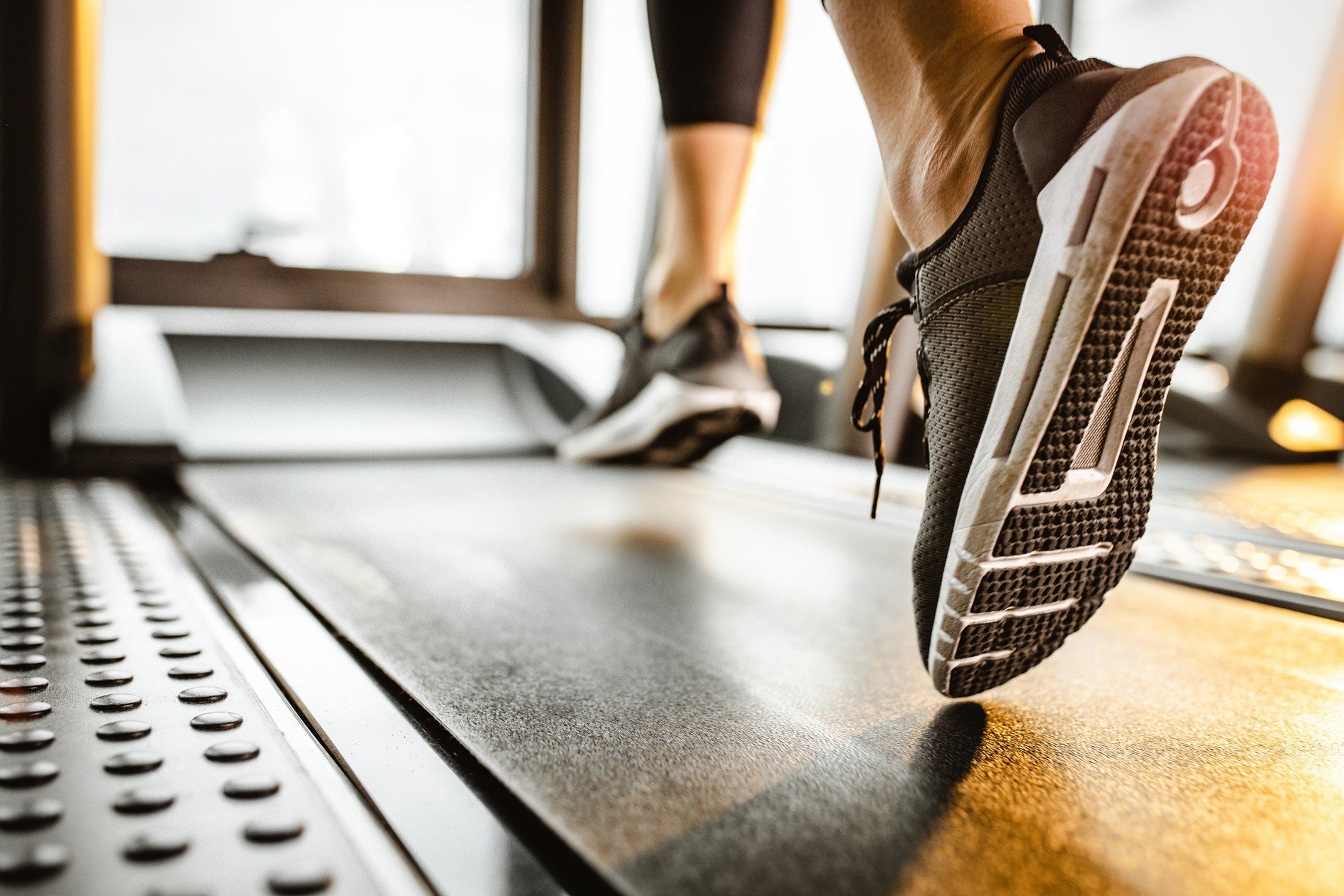


Belly fat is a common concern for many of us, especially as we age. It affects the physical appearance and can cause serious health problems. However, not all belly fat is the same. There are two types of belly fat: the visible one that covers your abs and the more dangerous one that’s stored deep inside your organs, known as visceral fat.
Visceral fat is a type of fat that surrounds the organs in the abdominal cavity, including the liver, pancreas, and intestines. Unlike subcutaneous fat, found just below the skin, visceral fat is metabolically active and releases hormones and other substances that can cause inflammation and insulin resistance.
Various health problems, including type 2 diabetes, heart disease, and cancer, are linked to excess visceral fat. Even people who are not overweight can have excess visceral fat, making it essential to know how to reduce it.
More on the dangers of visceral fat
One study published in the Journal of the American College of Cardiology found that people with high visceral fat levels were more than twice as likely to die from heart disease as those with lower visceral fat levels.
Furthermore, visceral fat historically shows increased insulin resistance, which can contribute to developing type 2 diabetes. This result is because visceral fat releases hormones and other molecules that can interfere with the body’s ability to regulate blood sugar levels.
In addition to these health risks, excess visceral fat can contribute to sleep apnea, joint problems, and even certain types of cancer. Therefore, reducing visceral fat is crucial, even if it may be more difficult to lose than subcutaneous fat.
Difficulty of Losing Stored Belly Fat
Despite the importance of reducing visceral fat, it is a challenging task. One of the main reasons for the difficulty of losing stored belly fat is that it may be more metabolically active than other forms of stored body fat. It can release fatty acids into the bloodstream more quickly, making it harder to lose.
Another reason for the difficulty of losing stored belly fat is that it is often the last place that the body loses fat. The body holds the fat in a particular order, and the belly is usually the last place that fat is stored. Therefore, losing belly fat can take longer than losing fat in other areas of the body.
Despite the difficulty of losing stored belly fat, it is essential to note that overall weight loss is the key to losing belly fat. While targeted exercises for the belly area may not be practical, a combination of training and diet can help create a caloric deficit necessary for fat loss.
While experts don’t fully understand why visceral fat is harder to lose than subcutaneous fat, you can take steps to reduce it. In this article, we’ll explore four easy steps to lose belly fat, focusing on reducing visceral fat.
In the next section, we will discuss the role of exercise in reducing visceral fat and why training is essential, even if it does not lead to weight loss.
Exercise and Visceral Fat
Many people believe that doing targeted exercises for the abdominal muscles, such as sit-ups or crunches, will help reduce belly fat. However, no scientific evidence supports the idea that spot reduction is effective. A study published in the Journal of Strength and Conditioning Research found that performing abdominal exercises did not affect body fat percentage or visceral fat levels.
Exercise, in general, reduces visceral fat and is essential for it. It increases muscle mass and can lead to a higher resting metabolic rate, meaning your body will burn more calories even when you’re not exercising. Aerobic exercise, such as running, swimming, or cycling, has been shown to reduce visceral fat even without causing weight loss. Resistance training, such as weightlifting, can also be practical.
It’s important to note that exercise alone is unlikely enough to reduce visceral fat significantly. Combining fitness with a calorie-controlled diet that creates a sustained caloric deficit is essential to achieve meaningful results. Additionally, regular exercise has numerous other health benefits, such as improving cardiovascular health, increasing insulin sensitivity, and reducing inflammation. Therefore, it’s a good idea to incorporate both aerobic and resistance exercises into your routine, even if your primary goal is to reduce visceral fat.
1. Resistance Training
- Resistance training helps increase muscle mass, which can lead to an increase in metabolic rate and a decrease in body fat, including visceral fat.
- Resistance training helps improve insulin sensitivity, which can help prevent the accumulation of visceral fat.
- Resistance training helps reduce inflammation, which is associated with visceral fat accumulation.
- Resistance training can also help improve cardiovascular health, which can help prevent the development of health problems associated with visceral fat accumulation.
2. Cardio
- Cardio exercise increases your heart rate and metabolism, which helps burn calories and fat.
- Cardio exercise helps to reduce overall body fat, including visceral fat when combined with a healthy diet.
- Cardio exercise can improve insulin sensitivity, which helps to reduce visceral fat, as high insulin levels can contribute to visceral fat storage.
- Research has demonstrated that high-intensity interval training (HIIT) effectively reduces visceral fat.
- Cardio exercise can also help to reduce stress levels, which can be a factor in visceral fat storage.
A combination of resistance training and cardiovascular exercise can provide the most comprehensive approach to reducing visceral fat. It’s important to note that while resistance training can help reduce visceral fat, it’s not a targeted approach to fat loss, and it’s essential to maintain a caloric deficit through a healthy diet and regular exercise to achieve overall fat loss.
Why is creating a caloric deficit key?
While exercise is essential for overall health, the key to losing belly fat is consistently getting into a caloric deficit for a long enough period. This means consuming fewer calories than your body burns each day. Modifying your diet is the most effective way to create this deficit.
The first step is to find out how many calories you should be eating to lose fat, which can be done by using a free calculator available online (like MyFitnessPal). This will estimate how many calories you need to consume to maintain your current weight and how many you need to eat to lose weight.
Note that calorie needs vary depending on age, gender, weight, height, and activity level. Therefore, it is essential to use an accurate calculator that takes these factors into account.
It’s important to note that creating a calorie deficit that is too large can be counterproductive. Your body may react to an extreme deficit by slowing your metabolism and storing fat, making it harder to lose weight. A moderate deficit, between 300-500 calories per day, is a good starting point.
Remember, losing belly fat takes time, consistency, and patience. Don’t expect results overnight, and maintain a healthy balance of exercise and diet to achieve your goals.
Once you know how many calories you need to consume to lose weight, the next step is to plan your meals accordingly.
3. Highly impactful but sustainable fat loss: healthy eating
Modifying the diet is the most effective way to create the calorie deficit needed for fat loss. However, it’s important to note that healthy eating doesn’t mean you have to give up the foods you enjoy. Instead, you should incorporate them into a balanced diet supporting fat loss.
Regarding healthy eating for fat loss, it’s vital to prioritize nutrient-dense foods that provide satiety and support overall health. A good starting point is to focus on high-protein foods like lean meats, fish, eggs, and legumes. Adequate protein intake is crucial among the macronutrients as it helps preserve muscle mass. Consuming 1.6 grams per kilogram of body weight (0.7 grams per pound) is a good starting point.
You should also include healthy fats like avocado, nuts, and olive oil, which provide essential nutrients and help keep you full. Fibrous vegetables like broccoli, spinach, and kale are also a great addition to your diet as they are low in calories and high in fiber, which helps keep you feeling full and satisfied.
Starchy carbohydrates like sweet potato, brown rice, and quinoa are also crucial for energy and satiety. Milk and fruit groups are also essential for a healthy diet. They provide essential vitamins and minerals, as well as fiber and antioxidants. However, it’s critical to consume these in moderation, as they can be high in sugar.
Healthy eating for fat loss should prioritize whole, nutrient-dense foods while limiting highly processed and sugary foods. By focusing on a balanced diet that includes the foods you enjoy, you’ll be more likely to stick to it and see sustainable results.
What’s an effective way to eat your favorite foods while eating healthy?
• The six food classes are meat/protein, fat, fibrous vegetables, starch, milk, and fruit. Choose your three favorite foods from each group and add two YOLO (you only live once) foods to make up your 20 favorite foods. So, you are eating nutrient-dense foods about 90% of the time. The key to this working is making sure the Yolo foods are lower in quantity since they can often pack a caloric punch.
Losing overall fat reduces visceral fat
When it comes to losing belly fat, the overall goal should be to reduce total body fat. It is impossible to spot reduced fat from a specific area, such as the belly. However, when overall fat loss occurs, visceral fat is also reduced.
It’s important to note that losing weight is not a one-time event but a long-term process that requires consistency and dedication. Even a modest reduction in weight, such as 5% of total body weight, can lead to significant improvements in health, including a reduction in visceral fat.
Aim for a steady weight loss of 1-2 pounds per week through diet and exercise. Consistency is critical. Losing weight too quickly can lead to muscle loss, decreased metabolism, and other health problems.
Additionally, focus on lifestyle changes that can be maintained over time rather than short-term, drastic changes. This includes making healthier food choices, incorporating regular physical activity into your routine, and managing stress.
By making small, sustainable changes to your lifestyle, you can not only reduce visceral fat but also improve overall health and well-being.
The Impact of Fat Types on Visceral Fat
Pay attention to the types of fats you consume because some are more harmful than others. A study by Rosquist and colleagues found that saturated fat-rich diets result in more significant visceral fat accumulation than polyunsaturated fat-rich diets.
Saturated fats are solid at room temperature and commonly found in fatty meats, full-fat dairy products, and baked goods. On the other hand, fatty fish, nuts, and seeds are familiar sources of polyunsaturated fats, typically liquid at room temperature.
Choosing healthier fats, such as polyunsaturated and monounsaturated fats, can help reduce the amount of harmful visceral fat in your body. It’s also important to limit your intake of saturated and trans fats, which can increase the risk of heart disease and other health problems.
By making simple changes in your diet, such as replacing butter with olive oil or snacking on nuts instead of chips, you can reduce your intake of harmful fats and help promote overall health.
4. Why and how can you reduce visceral fat by sleeping
There are several reasons why sleep can help reduce visceral fat:
- Sleeping for enough time can help regulate hormones like leptin and ghrelin, which play a role in appetite and metabolism. Inadequate sleep can disrupt these hormones and contribute to weight gain, including visceral fat.
- Sleep deprivation can also lead to insulin resistance, which means your body has difficulty processing glucose and can lead to weight gain, including visceral fat.
- Getting enough sleep can also help reduce inflammation in the body, which is associated with the development of visceral fat. Increased stress levels can result from lack of sleep, and stress can trigger cortisol, a hormone linked to visceral fat accumulation.
Summary
Losing belly fat is a common goal for many people, but it’s essential to understand that there are two types of belly fat: subcutaneous and visceral. Visceral fat, the kind that’s stored deep inside your organs, can cause serious health problems and is more difficult to lose than subcutaneous fat. However, by following a few easy steps and making some lifestyle changes, it’s possible to reduce visceral fat.
Exercise is vital for overall health, but targeted exercises alone are ineffective in reducing visceral fat. Instead, creating a caloric deficit through diet modification is the most effective way to lose belly fat. This can be done by calculating your daily caloric needs and mainly eating foods from the high protein, fat, fibrous vegetable, starch, milk, and fruit groups.
It’s also essential to make sure you’re consuming an adequate amount of protein to help preserve muscle mass. Diets rich in saturated fats cause a more significant accumulation of visceral fat than those rich in polyunsaturated fats, emphasizing the importance of choosing healthier fats. Getting enough quality sleep is important to reducing visceral fat too.
Remember, losing overall fat will also reduce visceral fat. Consistency is key when making lifestyle changes to reduce belly fat, so staying committed to your goals is essential.
Stay motivated and keep making healthy choices. Keep going even if it takes time to see results.
References:
“Study Shows More Reasons Why Belly Fat Is Dangerous for the Heart.” American College of Cardiology, 27 Sept. 2016, https://www.acc.org/about-acc/press-releases/2016/09/26/15/13/study-shows-more-reasons-why-belly-fat-is-dangerous-for-the-heart.
Vispute SS, Smith JD, LeCheminant JD, Hurley KS. The effect of abdominal exercise on abdominal fat. J Strength Cond Res. 2011 Sep;25(9):2559-64. doi: 10.1519/JSC.0b013e3181fb4a46. PMID: 21804427.
Rosqvist F, Kullberg J, Ståhlman M, Cedernaes J, Heurling K, Johansson HE, Iggman D, Wilking H, Larsson A, Eriksson O, Johansson L, Straniero S, Rudling M, Antoni G, Lubberink M, Orho-Melander M, Borén J, Ahlström H, Risérus U. Overeating Saturated Fat Promotes Fatty Liver and Ceramides Compared With Polyunsaturated Fat: A Randomized Trial. J Clin Endocrinol Metab. 2019 Dec 1;104(12):6207-6219. doi: 10.1210/jc.2019-00160. PMID: 31369090; PMCID: PMC6839433.
Editor's Pick



Belly fat is a common concern for many of us, especially as we age. It affects the physical appearance and can cause serious health problems. However, not all belly fat is the same. There are two types of belly fat: the visible one that covers your abs and the more dangerous one that’s stored deep inside your organs, known as visceral fat.
Visceral fat is a type of fat that surrounds the organs in the abdominal cavity, including the liver, pancreas, and intestines. Unlike subcutaneous fat, found just below the skin, visceral fat is metabolically active and releases hormones and other substances that can cause inflammation and insulin resistance.
Various health problems, including type 2 diabetes, heart disease, and cancer, are linked to excess visceral fat. Even people who are not overweight can have excess visceral fat, making it essential to know how to reduce it.
More on the dangers of visceral fat
One study published in the Journal of the American College of Cardiology found that people with high visceral fat levels were more than twice as likely to die from heart disease as those with lower visceral fat levels.
Furthermore, visceral fat historically shows increased insulin resistance, which can contribute to developing type 2 diabetes. This result is because visceral fat releases hormones and other molecules that can interfere with the body’s ability to regulate blood sugar levels.
In addition to these health risks, excess visceral fat can contribute to sleep apnea, joint problems, and even certain types of cancer. Therefore, reducing visceral fat is crucial, even if it may be more difficult to lose than subcutaneous fat.
Difficulty of Losing Stored Belly Fat
Despite the importance of reducing visceral fat, it is a challenging task. One of the main reasons for the difficulty of losing stored belly fat is that it may be more metabolically active than other forms of stored body fat. It can release fatty acids into the bloodstream more quickly, making it harder to lose.
Another reason for the difficulty of losing stored belly fat is that it is often the last place that the body loses fat. The body holds the fat in a particular order, and the belly is usually the last place that fat is stored. Therefore, losing belly fat can take longer than losing fat in other areas of the body.
Despite the difficulty of losing stored belly fat, it is essential to note that overall weight loss is the key to losing belly fat. While targeted exercises for the belly area may not be practical, a combination of training and diet can help create a caloric deficit necessary for fat loss.
While experts don’t fully understand why visceral fat is harder to lose than subcutaneous fat, you can take steps to reduce it. In this article, we’ll explore four easy steps to lose belly fat, focusing on reducing visceral fat.
In the next section, we will discuss the role of exercise in reducing visceral fat and why training is essential, even if it does not lead to weight loss.
Exercise and Visceral Fat
Many people believe that doing targeted exercises for the abdominal muscles, such as sit-ups or crunches, will help reduce belly fat. However, no scientific evidence supports the idea that spot reduction is effective. A study published in the Journal of Strength and Conditioning Research found that performing abdominal exercises did not affect body fat percentage or visceral fat levels.
Exercise, in general, reduces visceral fat and is essential for it. It increases muscle mass and can lead to a higher resting metabolic rate, meaning your body will burn more calories even when you’re not exercising. Aerobic exercise, such as running, swimming, or cycling, has been shown to reduce visceral fat even without causing weight loss. Resistance training, such as weightlifting, can also be practical.
It’s important to note that exercise alone is unlikely enough to reduce visceral fat significantly. Combining fitness with a calorie-controlled diet that creates a sustained caloric deficit is essential to achieve meaningful results. Additionally, regular exercise has numerous other health benefits, such as improving cardiovascular health, increasing insulin sensitivity, and reducing inflammation. Therefore, it’s a good idea to incorporate both aerobic and resistance exercises into your routine, even if your primary goal is to reduce visceral fat.
1. Resistance Training
- Resistance training helps increase muscle mass, which can lead to an increase in metabolic rate and a decrease in body fat, including visceral fat.
- Resistance training helps improve insulin sensitivity, which can help prevent the accumulation of visceral fat.
- Resistance training helps reduce inflammation, which is associated with visceral fat accumulation.
- Resistance training can also help improve cardiovascular health, which can help prevent the development of health problems associated with visceral fat accumulation.
2. Cardio
- Cardio exercise increases your heart rate and metabolism, which helps burn calories and fat.
- Cardio exercise helps to reduce overall body fat, including visceral fat when combined with a healthy diet.
- Cardio exercise can improve insulin sensitivity, which helps to reduce visceral fat, as high insulin levels can contribute to visceral fat storage.
- Research has demonstrated that high-intensity interval training (HIIT) effectively reduces visceral fat.
- Cardio exercise can also help to reduce stress levels, which can be a factor in visceral fat storage.
A combination of resistance training and cardiovascular exercise can provide the most comprehensive approach to reducing visceral fat. It’s important to note that while resistance training can help reduce visceral fat, it’s not a targeted approach to fat loss, and it’s essential to maintain a caloric deficit through a healthy diet and regular exercise to achieve overall fat loss.
Why is creating a caloric deficit key?
While exercise is essential for overall health, the key to losing belly fat is consistently getting into a caloric deficit for a long enough period. This means consuming fewer calories than your body burns each day. Modifying your diet is the most effective way to create this deficit.
The first step is to find out how many calories you should be eating to lose fat, which can be done by using a free calculator available online (like MyFitnessPal). This will estimate how many calories you need to consume to maintain your current weight and how many you need to eat to lose weight.
Note that calorie needs vary depending on age, gender, weight, height, and activity level. Therefore, it is essential to use an accurate calculator that takes these factors into account.
It’s important to note that creating a calorie deficit that is too large can be counterproductive. Your body may react to an extreme deficit by slowing your metabolism and storing fat, making it harder to lose weight. A moderate deficit, between 300-500 calories per day, is a good starting point.
Remember, losing belly fat takes time, consistency, and patience. Don’t expect results overnight, and maintain a healthy balance of exercise and diet to achieve your goals.
Once you know how many calories you need to consume to lose weight, the next step is to plan your meals accordingly.
3. Highly impactful but sustainable fat loss: healthy eating
Modifying the diet is the most effective way to create the calorie deficit needed for fat loss. However, it’s important to note that healthy eating doesn’t mean you have to give up the foods you enjoy. Instead, you should incorporate them into a balanced diet supporting fat loss.
Regarding healthy eating for fat loss, it’s vital to prioritize nutrient-dense foods that provide satiety and support overall health. A good starting point is to focus on high-protein foods like lean meats, fish, eggs, and legumes. Adequate protein intake is crucial among the macronutrients as it helps preserve muscle mass. Consuming 1.6 grams per kilogram of body weight (0.7 grams per pound) is a good starting point.
You should also include healthy fats like avocado, nuts, and olive oil, which provide essential nutrients and help keep you full. Fibrous vegetables like broccoli, spinach, and kale are also a great addition to your diet as they are low in calories and high in fiber, which helps keep you feeling full and satisfied.
Starchy carbohydrates like sweet potato, brown rice, and quinoa are also crucial for energy and satiety. Milk and fruit groups are also essential for a healthy diet. They provide essential vitamins and minerals, as well as fiber and antioxidants. However, it’s critical to consume these in moderation, as they can be high in sugar.
Healthy eating for fat loss should prioritize whole, nutrient-dense foods while limiting highly processed and sugary foods. By focusing on a balanced diet that includes the foods you enjoy, you’ll be more likely to stick to it and see sustainable results.
What’s an effective way to eat your favorite foods while eating healthy?
• The six food classes are meat/protein, fat, fibrous vegetables, starch, milk, and fruit. Choose your three favorite foods from each group and add two YOLO (you only live once) foods to make up your 20 favorite foods. So, you are eating nutrient-dense foods about 90% of the time. The key to this working is making sure the Yolo foods are lower in quantity since they can often pack a caloric punch.
Losing overall fat reduces visceral fat
When it comes to losing belly fat, the overall goal should be to reduce total body fat. It is impossible to spot reduced fat from a specific area, such as the belly. However, when overall fat loss occurs, visceral fat is also reduced.
It’s important to note that losing weight is not a one-time event but a long-term process that requires consistency and dedication. Even a modest reduction in weight, such as 5% of total body weight, can lead to significant improvements in health, including a reduction in visceral fat.
Aim for a steady weight loss of 1-2 pounds per week through diet and exercise. Consistency is critical. Losing weight too quickly can lead to muscle loss, decreased metabolism, and other health problems.
Additionally, focus on lifestyle changes that can be maintained over time rather than short-term, drastic changes. This includes making healthier food choices, incorporating regular physical activity into your routine, and managing stress.
By making small, sustainable changes to your lifestyle, you can not only reduce visceral fat but also improve overall health and well-being.
The Impact of Fat Types on Visceral Fat
Pay attention to the types of fats you consume because some are more harmful than others. A study by Rosquist and colleagues found that saturated fat-rich diets result in more significant visceral fat accumulation than polyunsaturated fat-rich diets.
Saturated fats are solid at room temperature and commonly found in fatty meats, full-fat dairy products, and baked goods. On the other hand, fatty fish, nuts, and seeds are familiar sources of polyunsaturated fats, typically liquid at room temperature.
Choosing healthier fats, such as polyunsaturated and monounsaturated fats, can help reduce the amount of harmful visceral fat in your body. It’s also important to limit your intake of saturated and trans fats, which can increase the risk of heart disease and other health problems.
By making simple changes in your diet, such as replacing butter with olive oil or snacking on nuts instead of chips, you can reduce your intake of harmful fats and help promote overall health.
4. Why and how can you reduce visceral fat by sleeping
There are several reasons why sleep can help reduce visceral fat:
- Sleeping for enough time can help regulate hormones like leptin and ghrelin, which play a role in appetite and metabolism. Inadequate sleep can disrupt these hormones and contribute to weight gain, including visceral fat.
- Sleep deprivation can also lead to insulin resistance, which means your body has difficulty processing glucose and can lead to weight gain, including visceral fat.
- Getting enough sleep can also help reduce inflammation in the body, which is associated with the development of visceral fat. Increased stress levels can result from lack of sleep, and stress can trigger cortisol, a hormone linked to visceral fat accumulation.
Summary
Losing belly fat is a common goal for many people, but it’s essential to understand that there are two types of belly fat: subcutaneous and visceral. Visceral fat, the kind that’s stored deep inside your organs, can cause serious health problems and is more difficult to lose than subcutaneous fat. However, by following a few easy steps and making some lifestyle changes, it’s possible to reduce visceral fat.
Exercise is vital for overall health, but targeted exercises alone are ineffective in reducing visceral fat. Instead, creating a caloric deficit through diet modification is the most effective way to lose belly fat. This can be done by calculating your daily caloric needs and mainly eating foods from the high protein, fat, fibrous vegetable, starch, milk, and fruit groups.
It’s also essential to make sure you’re consuming an adequate amount of protein to help preserve muscle mass. Diets rich in saturated fats cause a more significant accumulation of visceral fat than those rich in polyunsaturated fats, emphasizing the importance of choosing healthier fats. Getting enough quality sleep is important to reducing visceral fat too.
Remember, losing overall fat will also reduce visceral fat. Consistency is key when making lifestyle changes to reduce belly fat, so staying committed to your goals is essential.
Stay motivated and keep making healthy choices. Keep going even if it takes time to see results.
References:
“Study Shows More Reasons Why Belly Fat Is Dangerous for the Heart.” American College of Cardiology, 27 Sept. 2016, https://www.acc.org/about-acc/press-releases/2016/09/26/15/13/study-shows-more-reasons-why-belly-fat-is-dangerous-for-the-heart.
Vispute SS, Smith JD, LeCheminant JD, Hurley KS. The effect of abdominal exercise on abdominal fat. J Strength Cond Res. 2011 Sep;25(9):2559-64. doi: 10.1519/JSC.0b013e3181fb4a46. PMID: 21804427.
Rosqvist F, Kullberg J, Ståhlman M, Cedernaes J, Heurling K, Johansson HE, Iggman D, Wilking H, Larsson A, Eriksson O, Johansson L, Straniero S, Rudling M, Antoni G, Lubberink M, Orho-Melander M, Borén J, Ahlström H, Risérus U. Overeating Saturated Fat Promotes Fatty Liver and Ceramides Compared With Polyunsaturated Fat: A Randomized Trial. J Clin Endocrinol Metab. 2019 Dec 1;104(12):6207-6219. doi: 10.1210/jc.2019-00160. PMID: 31369090; PMCID: PMC6839433.









Cool website.
I really liked your site.